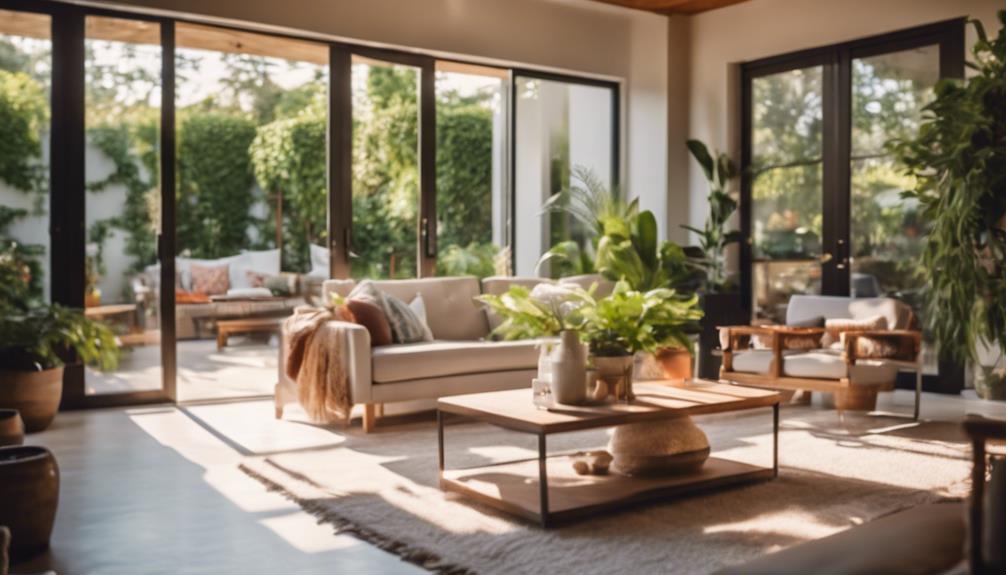To seamlessly blend your indoor and outdoor living spaces, start by evaluating how you currently use each area. Focus on design cohesion by using matching color palettes and furniture styles. Maximize natural light with large glass doors and airy curtains, creating a fluid shift between spaces. Upgrade to bi-fold doors for easy access and guarantee your outdoor areas are functional and inviting. Personalize your environment with unique decor and seasonal touches that reflect your style. This approach will help you create a beautiful, connected sanctuary that feels expansive and welcoming. There's more inspiration to explore, so keep going!
Key Takeaways
- Assess the flow between indoor and outdoor spaces to identify natural extensions and enhance design cohesion.
- Use consistent color palettes and similar furniture styles to create a seamless aesthetic between indoor and outdoor areas.
- Choose unified materials, such as matching flooring, to reinforce visual continuity across living spaces.
- Maximize natural light with large glass doors and airy fabrics to strengthen connections between indoor and outdoor environments.
Assess Your Living Spaces
How do you evaluate the size and layout of your indoor and outdoor spaces to create a seamless living experience?
Start by evaluating each area's current usage and considering how you'd like to use them in the future. Look at your indoor spaces—living rooms, kitchens, and dining areas—and think about how they connect with your outdoor areas, like patios or gardens.
Next, identify any connecting spaces that can serve as natural extensions of your living areas. These connections play an essential role in creating a cohesive design. If you have a sunroom or a well-placed set of sliding doors, they can enhance the flow between indoor and outdoor environments.
Also, take note of architectural features that might influence your design decisions, such as load-bearing walls or existing building regulations. These factors can affect how you layout your spaces and how well they work together.
Design for Cohesion
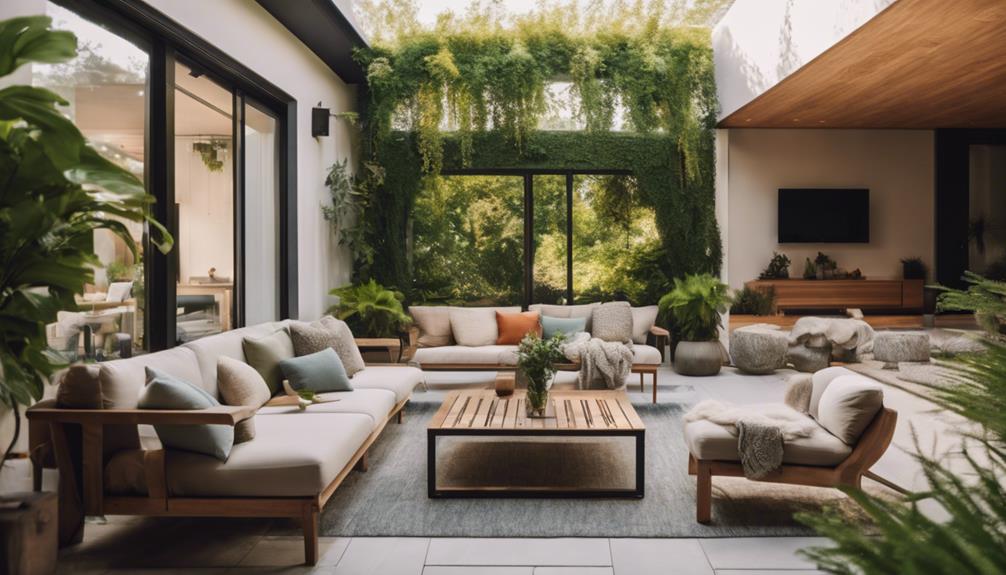
To create a cohesive indoor and outdoor living space, you'll want to focus on consistent color palettes and unified material choices.
Matching furniture styles across both areas helps maintain a seamless look that invites you to enjoy both environments as one.
Consistent Color Palettes
Creating a consistent color palette between your indoor and outdoor living spaces makes for a visually cohesive and inviting environment. When you harmonize colors, you enhance design harmony, allowing for a smooth shift between these areas.
Here are three key strategies to achieve that:
- Echo Indoor Hues: Incorporate colors from your indoor spaces into outdoor designs. For example, if you have neutral stone inside, match it with paver colors outside to maintain a cohesive aesthetic.
- Utilize Accent Colors: Use accent colors found indoors in your outdoor decor. Think about adding cushions or planters that reflect your interior palette. This not only adds personality but also keeps the overall scheme cohesive.
- Reinforce Visual Continuity: Incorporate shades from your home's exterior into your outdoor designs. This creates a unified look, ensuring both indoor and outdoor spaces complement each other, enhancing the sense of connection.
Unified Material Choices
Building on the idea of consistent color palettes, selecting unified materials for both indoor and outdoor spaces enhances the overall cohesion of your home's design. By using the same flooring materials, like hardwood or stone, you create a seamless indoor-outdoor connection. This not only reinforces a unified aesthetic but also invites natural light to flow through both areas.
| Unified Material Choices | Benefits | Tips for Implementation |
|---|---|---|
| Hardwood | Warmth and elegance | Extend flooring to patios |
| Stone | Durability and beauty | Use in both areas for unity |
| Composite Wood | Low maintenance | Match outdoor furniture styles |
| Neutral Tones | Visual continuity | Echo indoor hues outdoors |
Incorporating natural elements such as wood and stone enhances the beauty of your spaces while promoting a harmonious connection with the environment. When you choose outdoor furniture that complements your indoor decor, you maintain visual continuity, making the indoor and outdoor living areas feel interconnected rather than isolated. Embrace these unified material choices to elevate your home's design and enjoy a cohesive living experience.
Harmonious Furniture Styles
When choosing furniture styles for your indoor and outdoor spaces, maintaining a consistent design theme makes the entire area feel more cohesive and inviting. A seamless blend between your living spaces enhances the overall experience, connecting the indoors with the outdoors.
Here are three key strategies to achieve a harmonious look:
- Consistent Materials: Use similar materials, colors, and textures for both indoor furniture and outdoor furniture. This consistency creates a cohesive aesthetic that visually links the two spaces.
- Natural Elements: Incorporate elements like wood and stone in both your indoor and outdoor designs. These natural features promote a sense of harmony with the environment, making your indoor-outdoor space feel unified.
- Optimal Arrangement: Arrange your furniture to frame beautiful views and maintain continuity between areas. This not only enhances flow but also encourages movement between your indoor and outdoor living spaces.
Maximize Natural Light
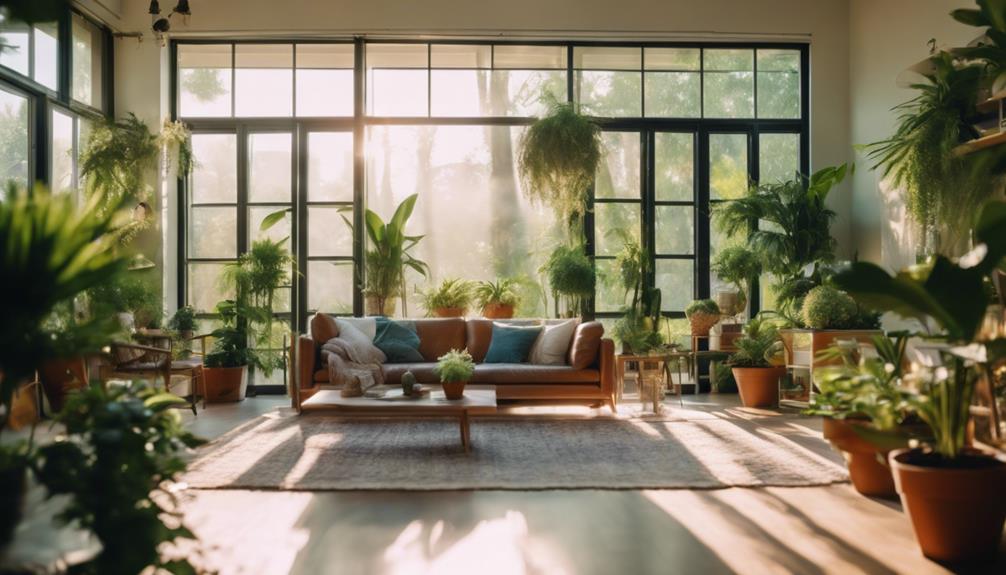
To brighten your home and enhance its ambiance, maximizing natural light is essential for creating inviting and uplifting spaces.
Start by removing any light-blocking blinds and opting for airy fabric curtains that allow sunlight to filter through while preserving your privacy.
Large glass doors are a fantastic addition; they not only illuminate your indoor-outdoor living space but also create a visual connection between the two areas, inviting the beauty of nature inside.
Consider installing skylights to increase natural light flow throughout your home. These features provide additional brightness and contribute to an open and airy atmosphere.
When designing your space, utilize consistent flooring materials between your indoor and outdoor areas. This approach enhances aesthetic continuity and allows natural light to flow seamlessly, reinforcing the seamless connection between your spaces.
Create Functional Transitions
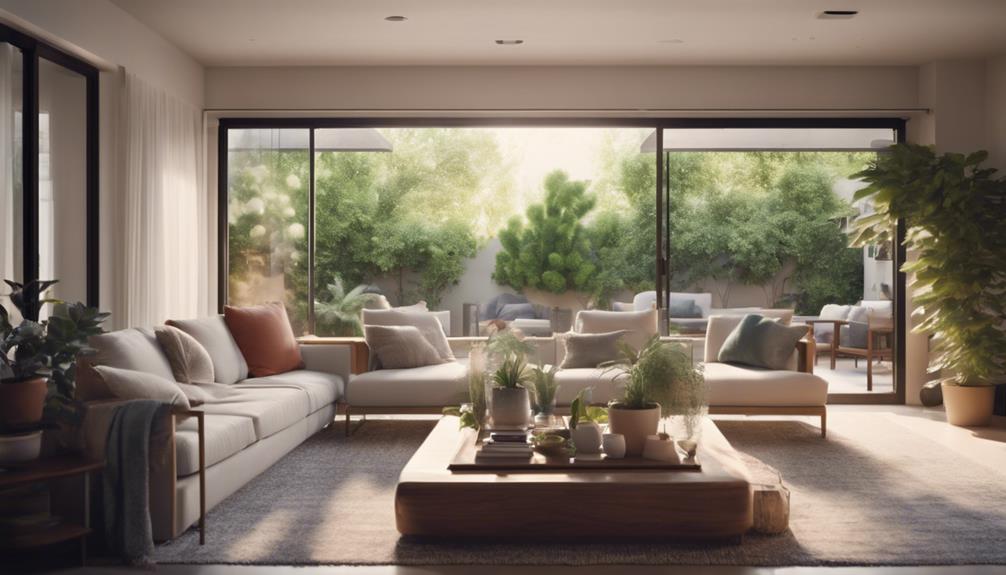
Creating functional shifts between indoor and outdoor spaces enhances flow and makes your home feel more cohesive. To achieve this seamless blending, consider implementing these ideas:
- Upgrade Your Doors: Replace standard doors with accordion, pocket, or bi-fold doors. These options create unobstructed passages, allowing for a smooth shift between your indoor and outdoor spaces.
- Opt for Large Glass Features: Install extra-large pivoting doors or multi-panel glass doors that retract into walls. This not only maximizes light and air movement but also blurs the lines between your living environment and the outside.
- Design Purposeful Outdoor Areas: Create outdoor spaces specifically designed for lounging, dining, or cooking. Using weather-resistant furnishings guarantees these areas are both functional and comfortable, allowing for a seamless connection to your home.
Enhance Outdoor Experiences
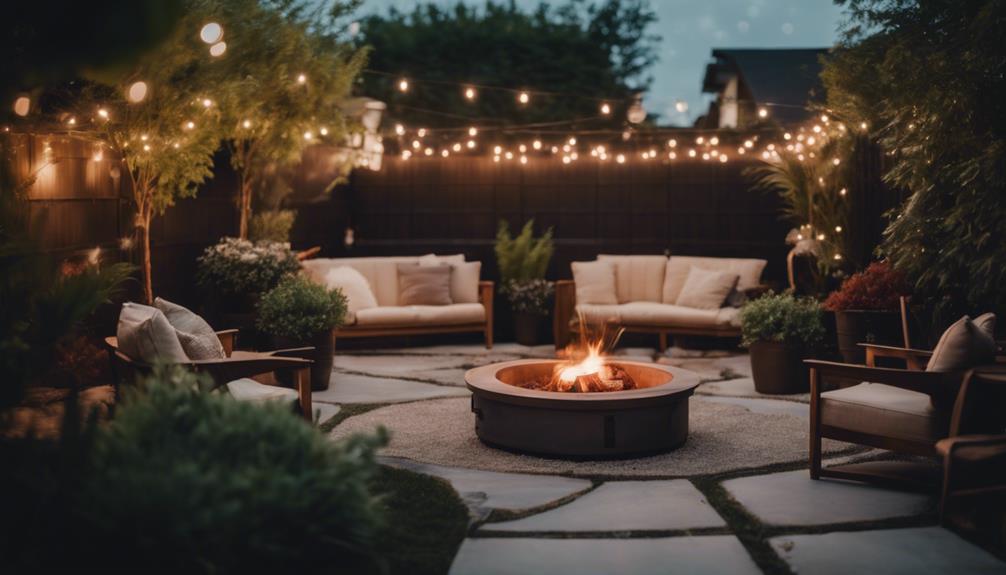
Enhancing outdoor experiences transforms your yard into a welcoming retreat where you can relax and entertain year-round. By creating a seamless connection between your indoor spaces and outdoor living space, you can enjoy the best of both worlds. Start by designing covered areas with fireplaces or fire pits, which extend usability during cooler evenings and create a cozy atmosphere.
Here's a quick visual representation of ideas to enhance your outdoor experience:
| Feature | Purpose | Benefits |
|---|---|---|
| Comfortable Furniture | Furnish your dining area | Encourages longer stays and relaxation |
| Ambient Lighting | Set the mood | Enhances safety and ambiance at night |
| Water Features | Add tranquility | Attracts wildlife and enhances sensory experience |
Personalize Your Spaces
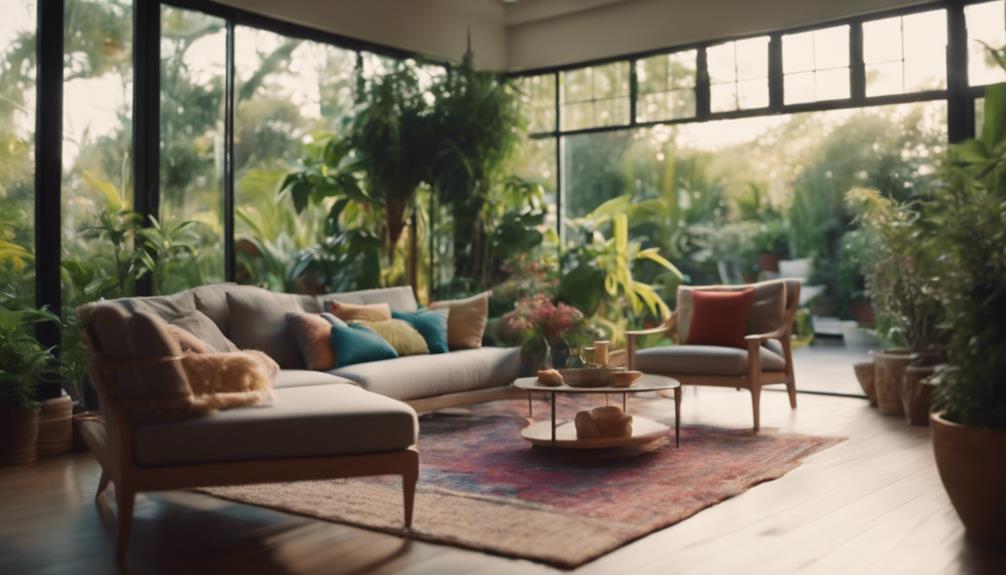
Personalizing your outdoor spaces not only enhances their beauty but also reflects your unique style and lifestyle. By incorporating thoughtful elements, you create an inviting atmosphere that feels like an extension of your indoor space.
Here are three ways to personalize your outdoor areas:
- Cushions and Fabrics: Use colorful cushions and textiles that resonate with your unique style. They add comfort and vibrancy, making your outdoor spaces feel welcoming.
- Storytelling Elements: Showcase items that tell your story, like souvenirs from travels or family heirlooms. These elements narrate your lifestyle choices and experiences, making your space truly one-of-a-kind.
- Seasonal Decor: Change your decor with the seasons. Whether it's adding pumpkins in fall or festive lights in winter, seasonal touches keep your outdoor environment fresh and engaging.
Don't forget to incorporate cultural touches that hold personal significance. Functional art pieces can also enhance beauty and utility, allowing your outdoor spaces to serve as both a retreat and a reflection of who you are.
Embrace these ideas to create a space that's uniquely yours!
Conclusion
By thoughtfully blending your indoor and outdoor spaces, you can create a harmonious environment that enhances your lifestyle.
Did you know that homes with strong indoor-outdoor connections can increase property value by up to 15%?
Embrace natural light, design for cohesion, and personalize your areas to reflect your style.
With these tips, you're not just improving aesthetics but also enriching your everyday living experience.
So, go ahead—transform your home into a seamless sanctuary!
